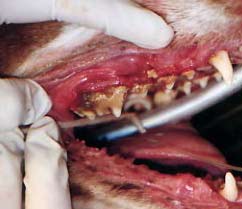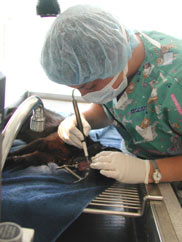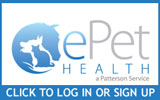Dental Cleaning and Polishing

Unlike humans, animals do not brush their teeth. Dry pet foods help to some degree. When the animal chews on the hard food, this action displaces the tartar building up on the teeth. Some animals are more prone to dental problems. Tartar build up can lead to infections because it gives the bacteria a warm, moist environment. This bacteria can then be swallowed and may enter the bloodstream causing heart, liver and kidney diseases. The dog in the picture suffers from tartar buildup and gingivitis (inflammation of the gums).

Prior to the procedure, patients have a blood test that tests liver and kidney function as well looks for signs of infection. A mild anesthetic is used and most patients go home the same day. Tartar and plaque are removed with an ultrasonic scaler above and below the gumline. This is followed by polishing which smooths the tooth enamel slowing any future plaque buildup. Therapy is continued at home with a round of antibiotics to ward off any bacteria loosened up by the cleaning. It is recommended to brush you pets teeth with a toothpaste and toothbrush designed for dogs and cats to prevent further buildup and to help strengthen the gums. Pet toothbrushes are ultra-soft and shaped to fit the mouth and teeth of your pet. Human toothpaste is not recommended because it contains ingredients that are not meant to be swallowed. Also, pet toothpastes come in flavors that appeal to dogs and cats, such as salmon, malt and poultry flavors.



